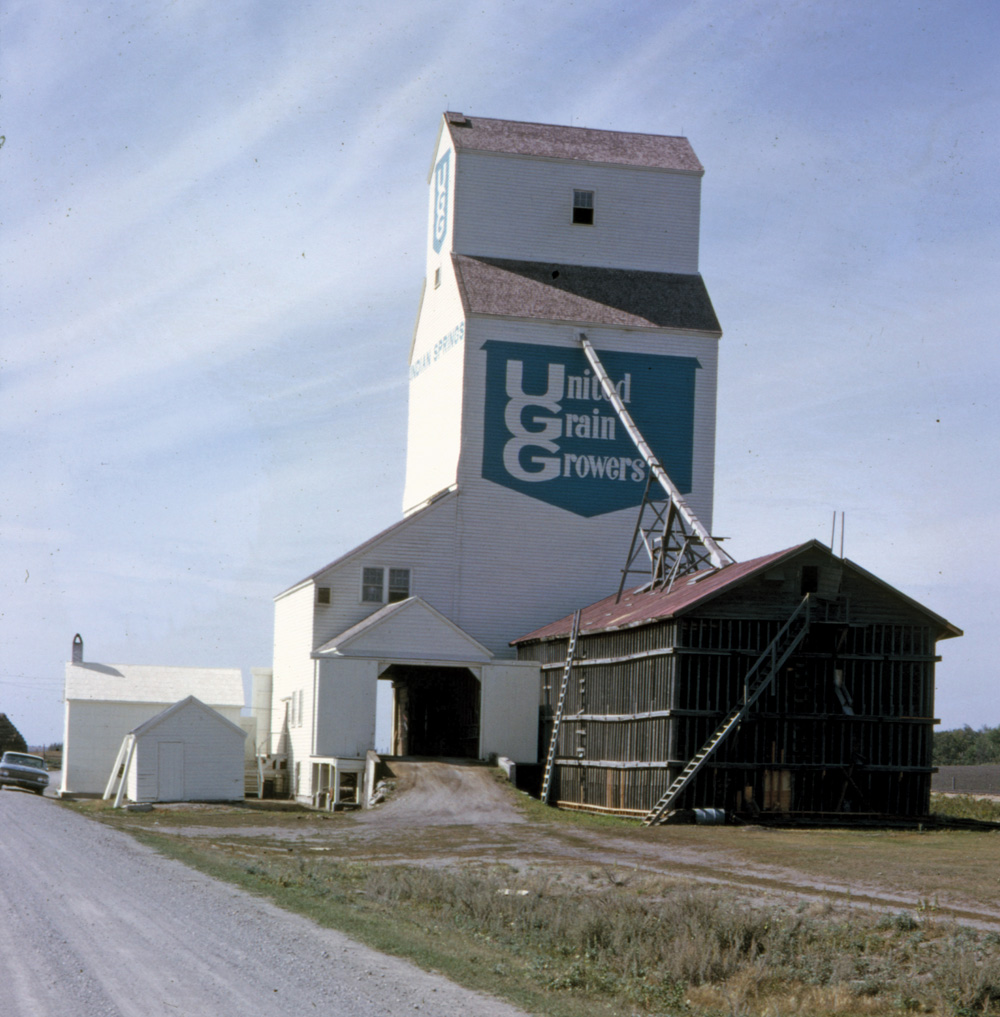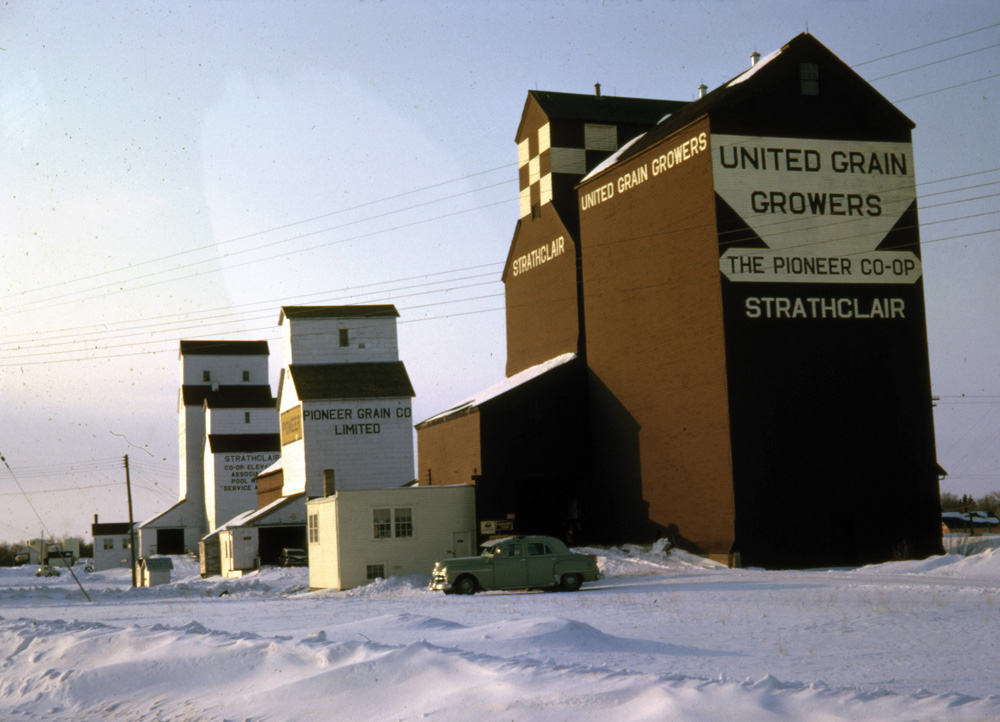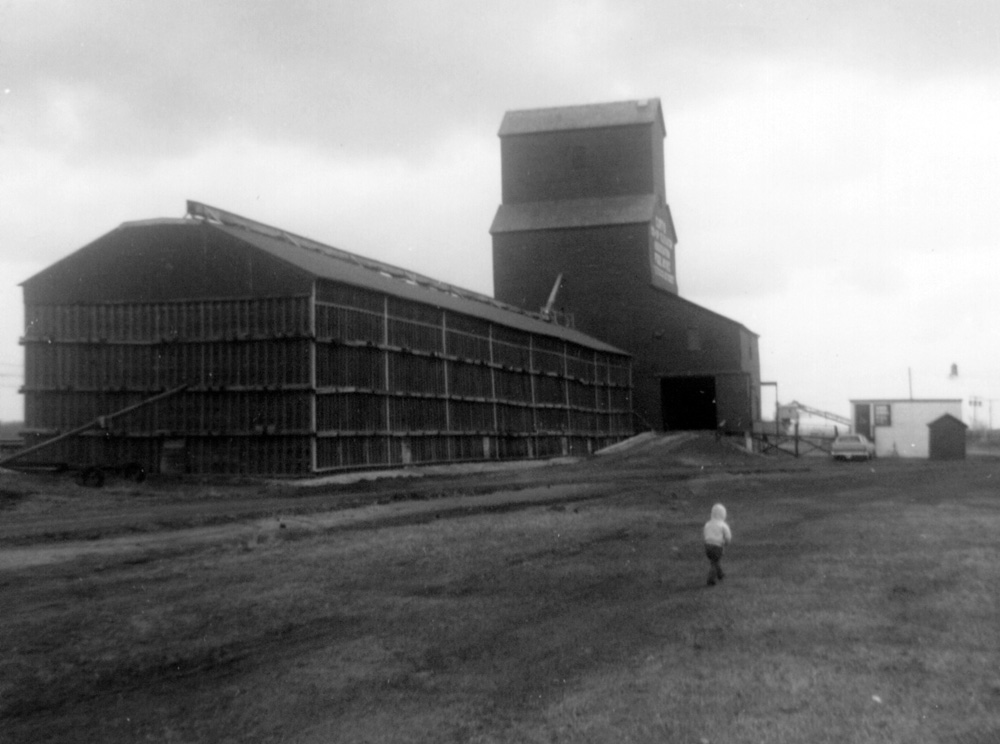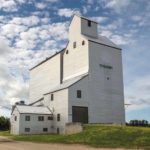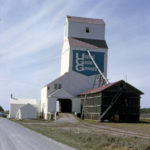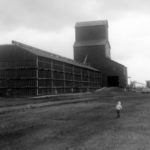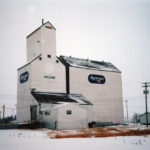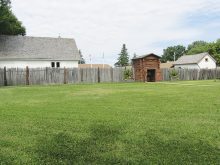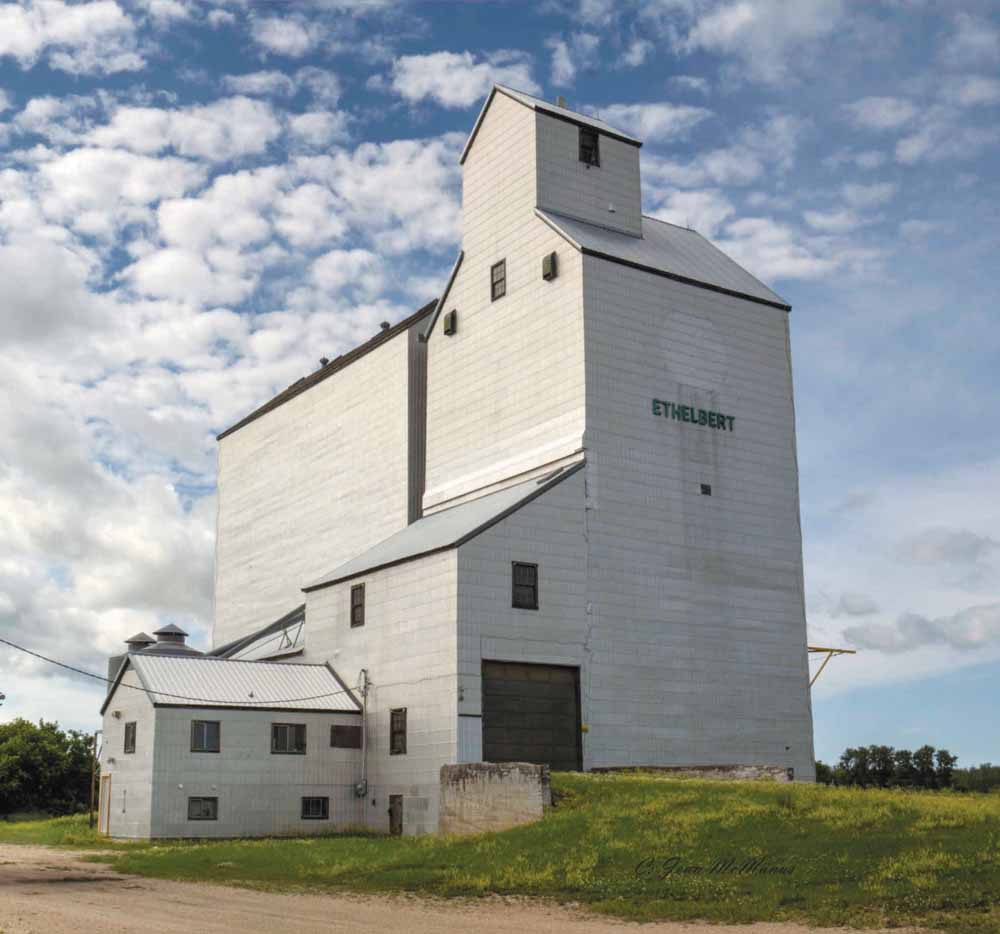
Ethelbert Pool_CMYK.jpg
This 51,500-bushel grain elevator in Ethelbert, once located on the CNR Cowan Subdivision, was built by the Manitoba Pool Elevators in 1967. A 110,000-bushel crib annex was built beside it in 1975. The railway stopped using the line in October 1998 and, after protracted negotiations with the community broke down, in 2000 the line was sold to a Brandon firm and the tracks were removed. Agricore closed its elevator and, two years later, it was sold to a group of five local farmers. The facility is still used for private grain storage.
Photo: Jean McManus
Indian Springs UGG_cmyk.jpg
A 55,000-bushel grain elevator and balloon annex at the railway siding of Indian Springs, on the CNR Carman Subdivision in the Swan Lake First Nation, was built by United Grain Growers in 1951. It replaced an earlier elevator constructed by the provincial government around 1916. During its 24 years in operation, there were just two agents: Tim Conrad (1907-94) and his son Roland. The elevator closed on December 5, 1975 and was removed from the site.
Photo: University of Manitoba Archives & Special Collections
Strathclair UGG_cmyk.jpg
When this photo was taken in 1962, there were three elevators in the village of Strathclair. The United Grain Growers elevator in the foreground dates from around 1930 and its crib annex from 1957. The Manitoba Pool elevator in the background was opened by the Province Elevator Company in 1933. Sold to the Pool in 1948, a new elevator was built in 1957 and the older elevator was converted to an annex, later replaced with two large crib annexes. All elevators, including one in the middle owned by Pioneer Grain, were sold to Pool in 1974 and have since been removed from the site.
Photo: University of Manitoba Archives & Special Collections
Curtis Pool_gc.jpg
A 30,000-bushel wooden grain elevator at Curtis, in the Rural Municipality of Portage la Prairie, was built in 1938 by Portage businessman Andy Forsythe. His Forsythe Elevator Company was one of the first companies west of Winnipeg to use grain-drying equipment. He introduced a fairer method for determining dockage, and successfully challenged the Canadian Pacific Railway over its blockage of highway rights-of-way, resulting in revised railway practices that are still in place today. Sold to Reliance Grain in 1946, the Curtis elevator was resold to Manitoba Pool in 1948 and a large balloon annex was built beside it in 1951. The elevator closed in July 1972 and was removed from the site.
Photo: University of Manitoba Archives & Special Collections
A wooden elevator at Holland was built in 1927 by a local co-operative working with Manitoba Pool Elevators. Its modest 50,000-bushel capacity was enlarged with a squat 75,000-bushel balloon annex in 1952 and a taller 85,000-bushel crib annex in 1958. The elevator was renovated thoroughly in 1982 and the balloon annex was removed around 1994. It survived the transfer to Agricore in 1998 but closed in early 2001 and was demolished in December 2003.
Photo: John Friesen
In the 1950s, there were over 700 grain elevators in Manitoba. Today, there are fewer than 200. You can help to preserve the legacy of these disappearing “Prairie sentinels.”
The Manitoba Historical Society (MHS) is gathering information about all elevators that ever stood in Manitoba, regardless of their present status. Collaborating with the Manitoba Co-operator it is supplying these images of a grain elevator each week in hopes readers will be able to tell the society more about it, or any other elevator they know of.
MHS Gordon Goldsborough webmaster and Journal editor has developed a website to post your replies to a series of questions about elevators. The MHS is interested in all grain elevators that have served the farm community.
Read Also

Reaction rolls in on Health Canada dicamba restriction proposal
Spray expert says proposed dicamba rule change would ban ‘over the top’ use of the herbicide
Your contributions will help gather historical information such as present status of elevators, names of companies, owners and agents, rail lines, year elevators were built — and dates when they were torn down (if applicable).
There is room on the website to post personal recollections and stories related to grain elevators. The MHS presently also has only a partial list of all elevators that have been demolished. You can help by updating that list if you know of one not included on that list.
Your contributions are greatly appreciated and will help the MHS develop a comprehensive, searchable database to preserve the farm community’s collective knowledge of what was once a vast network of grain elevators across Manitoba.
Please contribute to This Old Grain Elevator website here.
You will receive a response, by email or phone call, confirming that your submission was received.
Goldsborough is interested in hearing all sorts of experiences about the elevators — funny, sad, or anything in between. Readers willing to share their stories can leave messages at 204-474-7469.

